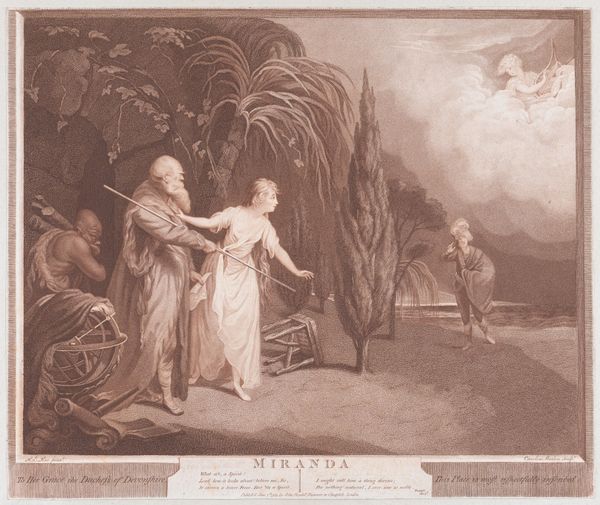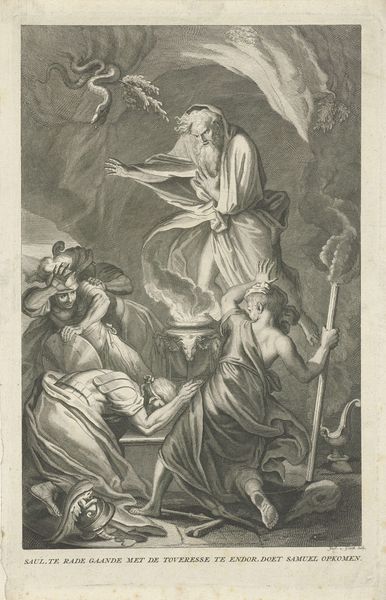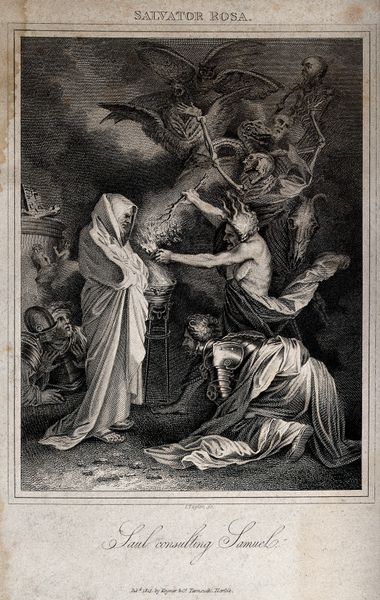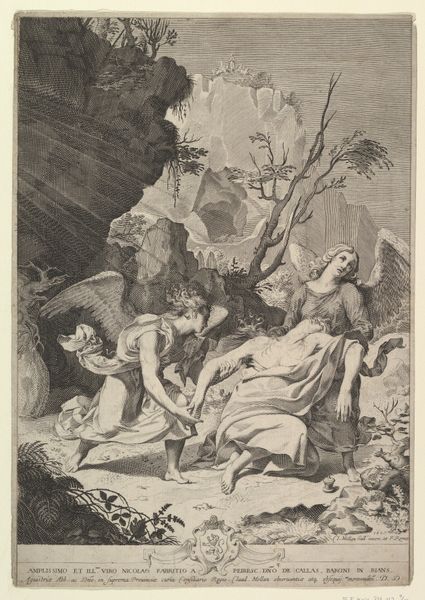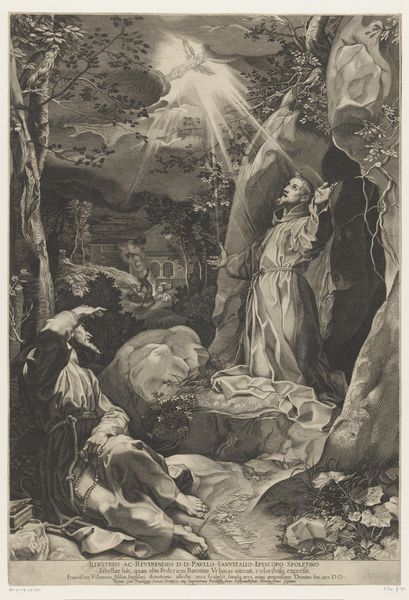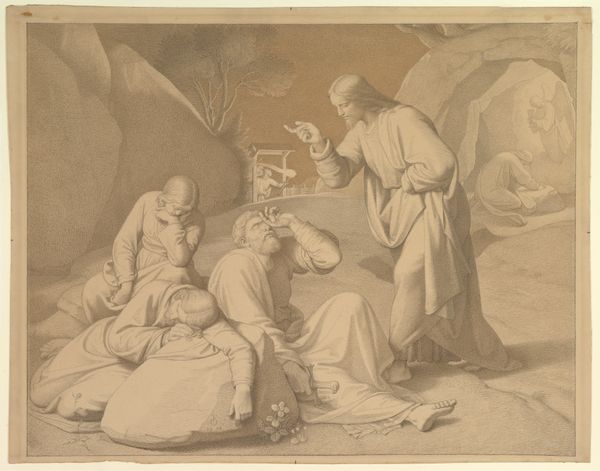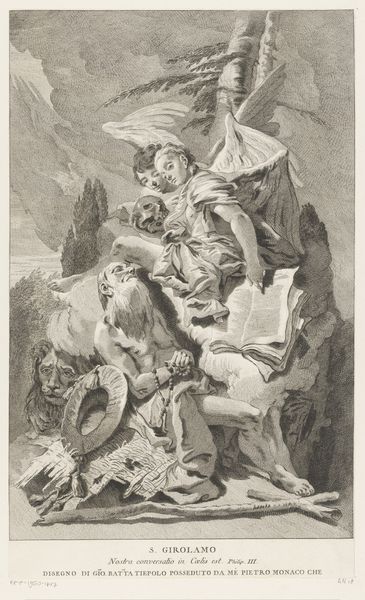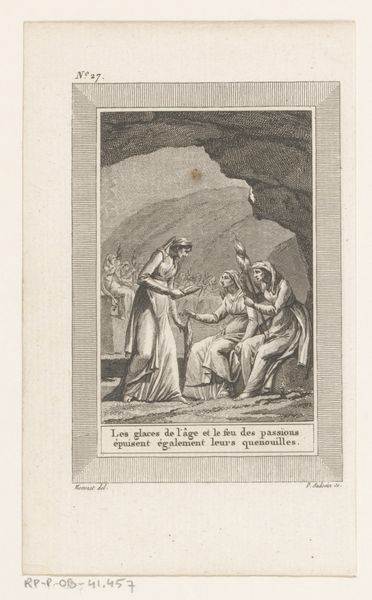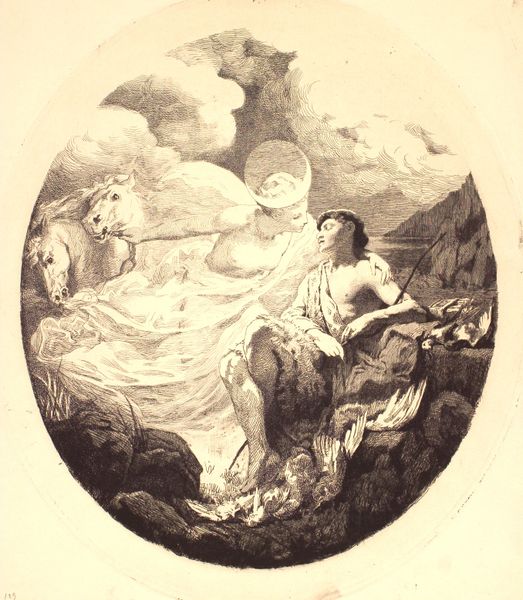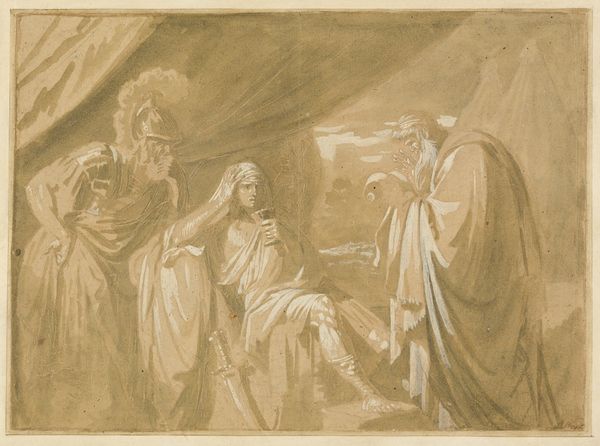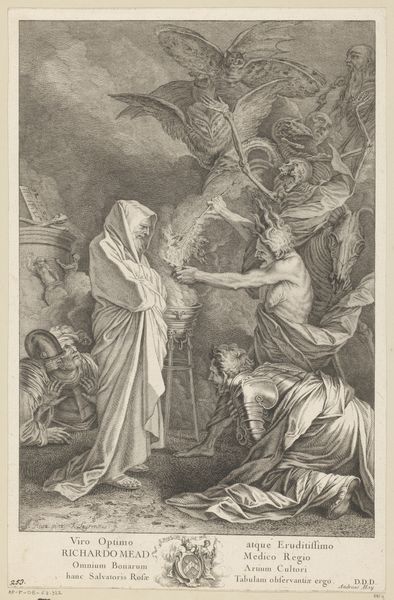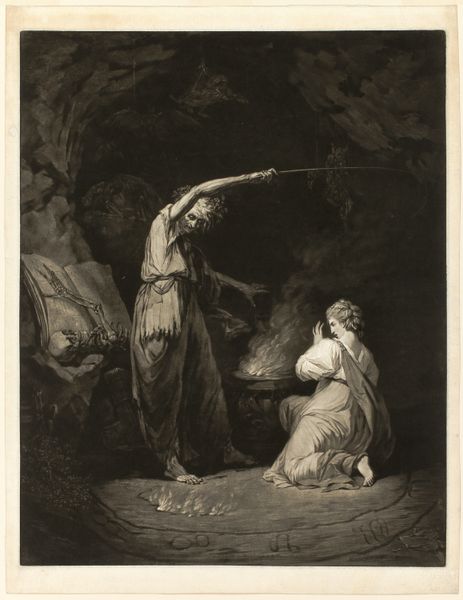
Prospero, Ferdinand og Miranda. Fra William Shakespeares "Stormen", 4. akt,1.scene 1790s
0:00
0:00
print, etching, engraving
#
narrative-art
# print
#
etching
#
figuration
#
romanticism
#
line
#
history-painting
#
engraving
Dimensions: 496 mm (height) x 635 mm (width) (bladmaal), 446 mm (height) x 600 mm (width) (billedmaal)
Editor: We're looking at Robert Thew's print, "Prospero, Ferdinand og Miranda. Fra William Shakespeares 'Stormen', 4. akt, 1. scene" from the 1790s, an etching and engraving currently held at the SMK. The romanticism really jumps out—it's almost theatrical! What aspects of its historical and cultural context most resonate with you? Curator: It's fascinating how Thew translates Shakespeare's "The Tempest" into a visual medium, right? Consider how popular Shakespeare was in the late 18th century. Prints like these democratized access to high culture. Instead of only seeing plays performed in elite theaters, a wider public could own and contemplate scenes at home. How do you think this particular depiction, emphasizing romanticism, speaks to the period? Editor: That's an interesting point! The almost dreamlike quality seems different from what I expect of the time. The romantic interpretation elevates emotion, making the scene very impactful. But the public accessibility – it's like art collecting for the middle class. Curator: Precisely! Thew, by choosing this dramatic moment with Prospero and the lovers being blessed, may have aimed to both capitalize on Shakespeare’s popularity, but also elevate printmaking as a form capable of conveying profound emotions and moral lessons, which were strong concerns of that period. Consider how print ownership facilitated intellectual and emotional engagement outside of institutional settings. What message was this art meant to send? Editor: So, it's less about the individual artist and more about the shared cultural values, that's neat. Thanks for illuminating the political impact. It wasn't what I expected at first! Curator: It's a pleasure! Recognizing the socio-political motivations expands our understanding of artworks beyond simple aesthetic preferences and highlights their importance as historical records.
Comments
No comments
Be the first to comment and join the conversation on the ultimate creative platform.
